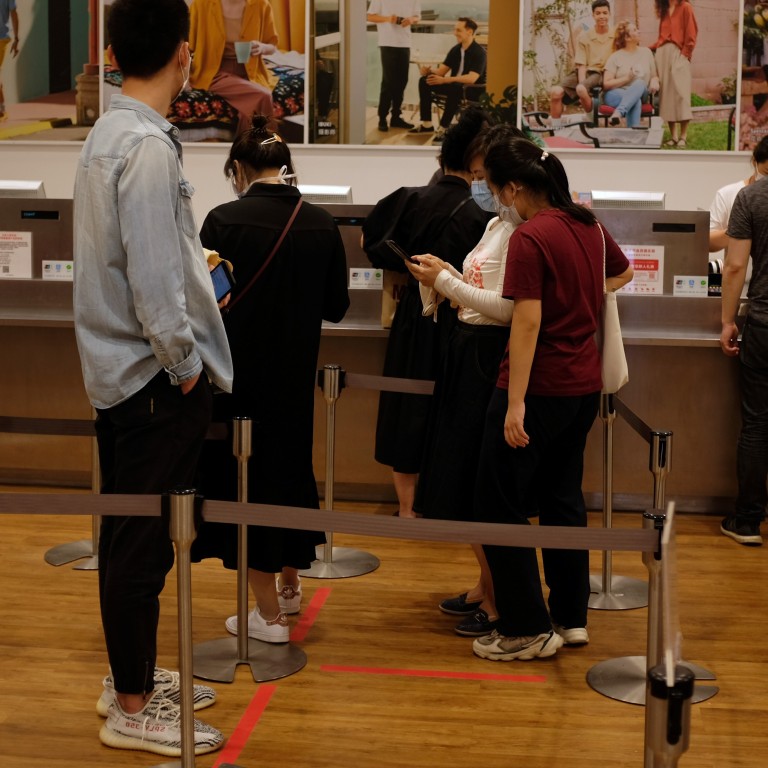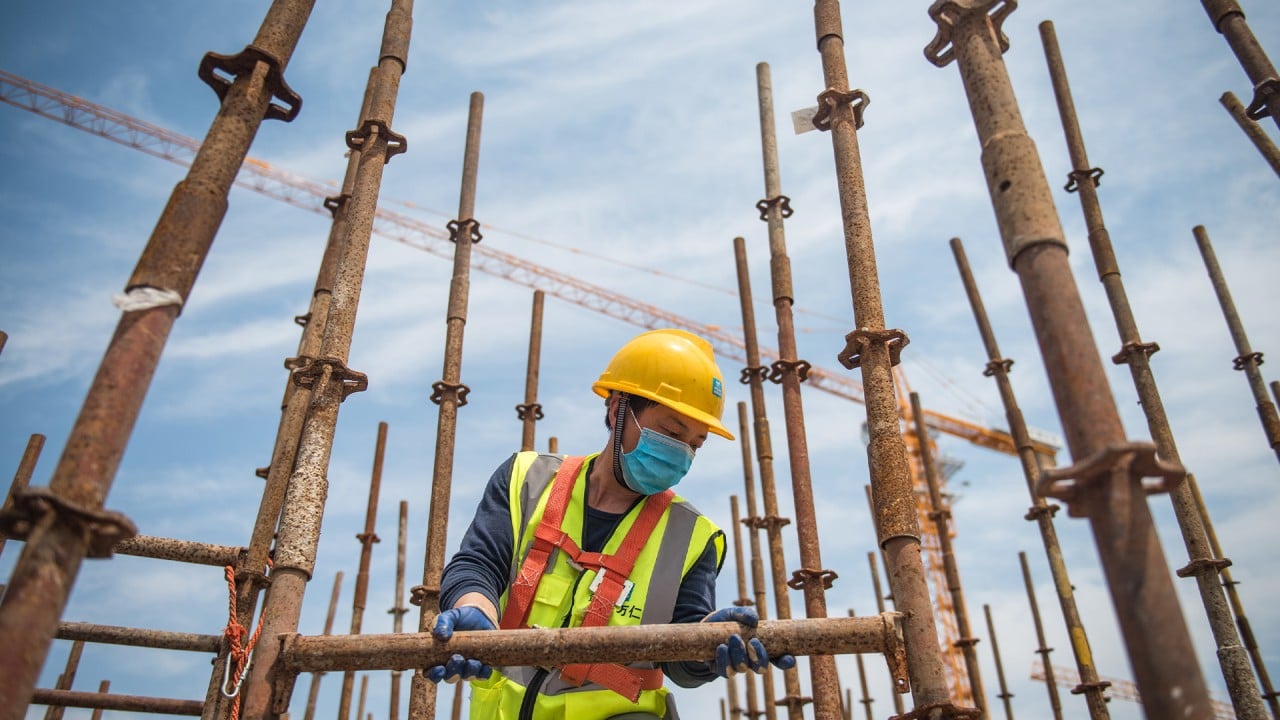
China’s services sector shows strong first growth since start of coronavirus outbreak as controls eased
- The Caixin/Markit services purchasing managers’ index (PMI) rose to 55.0 in May from 44.4 in April, hitting the highest level since late 2010
- The return to expansion for China’s services sector was driven by a sharp rise in new domestic business as the economy recovers from virus containment measures
China’s services sector bounced back strongly in May, posting the first growth since the beginning of the coronavirus outbreak earlier this year, as strict controls aimed at containing the pandemic were eased, a private survey showed on Wednesday.
The latest reading was the highest since October 2010.
The rebound into growth for China’s services sector, an important generator of jobs that accounted for about 60 per cent of the economy last year, was driven by a sharp rise in domestic new business to the highest level in nearly 10 years.
Services accelerated their recovery as the lockdown measures were relaxed. The contraction in manufacturing also narrowed, driven by domestic demand
Foreign demand, however, remained subdued as the pandemic hit China’s export markets hard, with the subindex for export orders falling for the fourth month in a row.
Employment in the sector also continued to contract, albeit at a slower pace.
“Services accelerated their recovery as the lockdown measures were relaxed. The contraction in manufacturing also narrowed, driven by domestic demand,” said Dan Wang, an analyst at the Economist Intelligence Unit.
“Since foreign orders remain weak, the increase in manufacturing production may result in overcapacity later in the year.
China migrant workers face jobless threat worse than Sars, financial crisis
“Employment in the private sector contracted further as more small businesses shut down. We expect the unemployment rate in the second quarter in China to reach 18 per cent.”
“Employment in the services sector remained worrisome,” said Wang Zhe, senior economist at Caixin Insight Group. “Most companies in the survey expressed caution about expanding hiring, citing concerns over ‘cutting costs and improving efficiency.’

05:02
Coronavirus backlash further fraying China’s ties to global economy
“In general, the improvement in supply and demand was still not able to fully offset the fallout from the pandemic, and more time is needed for the economy to get back to normal,” Wang said, noting that the combined employment gauge remained negative.
The depth of the decline has also highlighted the steep challenge facing the central government to get the economy back on track.
An inability to revive the services sector in particular, which accounts for most jobs in the country, presents a major test for the ruling Communist Party that has staked its legitimacy on stability and economic rejuvenation.

01:07
What is the purchasing managers' index (PMI)?
While China’s domestic economy is slowly improving from the lashing it took in the first quarter, the recovery has been weighed down by the pandemic’s impact on demand in Europe and the United States.
Beijing has released a flurry of stimulus measures to revive the economy, including the issuance of special treasury bonds, lower lending rates, tax exemptions and lifting the fiscal deficit ratio to 3.6 per cent of gross domestic product.
Production at smaller Chinese factories also improved sharply in May, according to data released on Monday.
The Caixin manufacturing PMI rose to 50.8 last month – its highest level since January – from 49.4 in April.
However, analysts said there were few indications of a marked pickup in the overall pace of economic growth.
On the whole, both the official PMI and Caixin PMI were more optimistic than expected in May
“On the whole, both the official PMI and Caixin PMI were more optimistic than expected in May,” said Chen Dafei, a senior analyst at Orient Securities, adding that China's trade and hospitality sectors are among those holding the economy back from a full recovery.
Chen remained “cautiously optimistic about the overall economic performance in the second half of the year”, adding that the fact the PMI only interviews those firms who have survived the downturn can be misleading.
“The recent package of tax cuts and fee cuts will no doubt help, but only if you survive,” Chen added

